Abstract
In recent years, China has consistently led the world in tomato cultivation, with an area of 1.14 million hectares (mha) in 2022, far surpassing other countries. This dominance reflects China’s large-scale agricultural capacity and the significant demand for tomatoes, both domestically and for processing into products like ketchup and paste. Over the past decades, tomato production has expanded globally, driven by rising demand in both fresh markets and processed goods. Other major producers include India, the United States, and Brazil, but China’s vast land area and favorable climate give it a distinct edge in global tomato production.
Tomato land use (Worldwide)
Since 1961, global tomato cultivation has shown significant growth, with China leading the way. In 2022, China reached its peak of 1.14 million hectares (mha), marking a stable point at 100% of its peak area. This growth reflects China’s vast agricultural resources and high demand for tomatoes, both for fresh consumption and processing. Other major producers, including India, the U.S., and Brazil, have also expanded cultivation, but China’s vast land area and favorable growing conditions have solidified its position as the top producer. The trend highlights increasing global demand for tomatoes and their processed products.
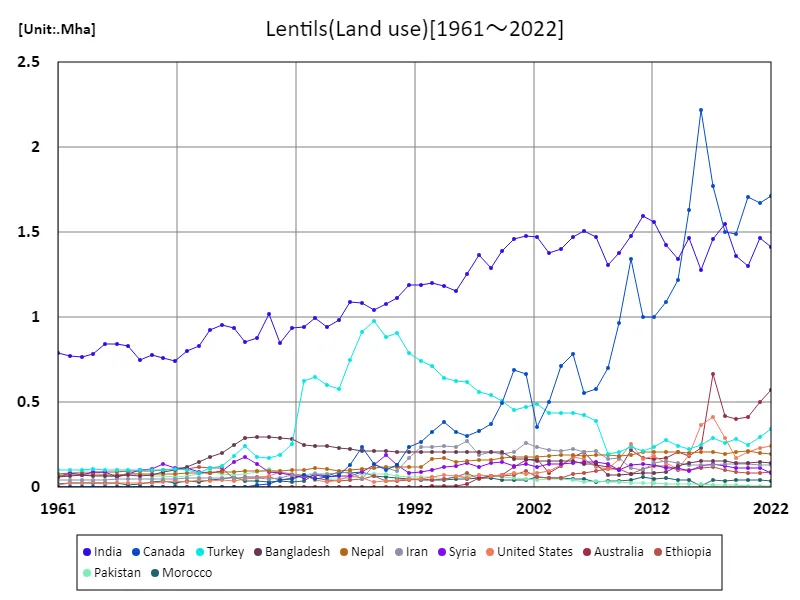

The maximum is 2.22Mha[2016] of Canada, and the current value is about 77.2%
Tomato land use (latest year, worldwide)
As of 2022, global tomato cultivation spans a total area of 4.92 million hectares (mha), with China accounting for the largest share at 1.14 mha. This represents a significant concentration, as China alone holds over 23% of global tomato land. The global average area per country is 29.3 thousand hectares (kha), highlighting the smaller scale of cultivation in other countries. Over the years, tomato production has expanded worldwide, driven by both fresh market demand and processed products like ketchup. China’s dominance in tomato land use underscores its pivotal role in global agriculture.
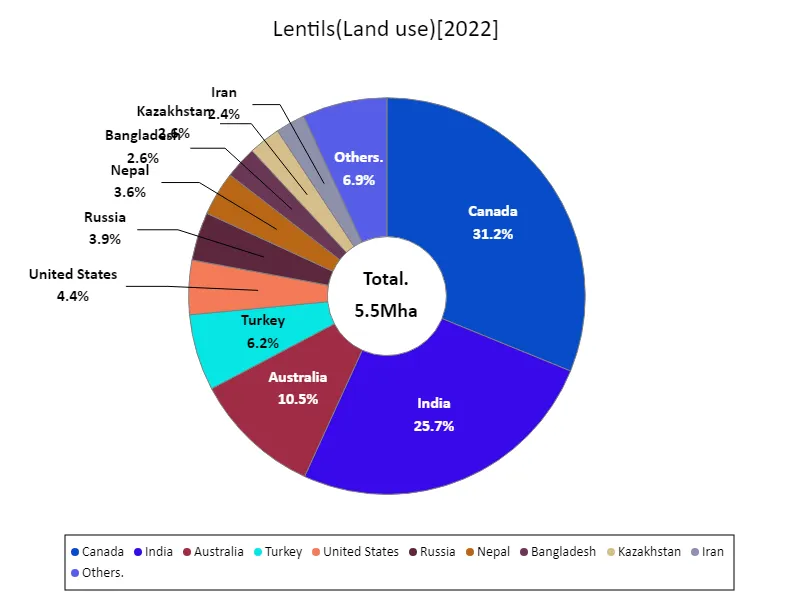

The maximum is 1.72Mha of Canada, the average is 120kha, and the total is 5.5Mha
Tomato land use (continent)
As of 2022, Asia leads global tomato cultivation, covering a total area of 2.7 million hectares (mha), the highest regional value. This reflects Asia’s significant role in tomato production, with countries like China, India, and others contributing to the region’s dominance. Over time, tomato farming has expanded in response to rising demand for both fresh and processed products. While Asia accounts for more than half of global tomato land use, other regions like North America and Latin America also remain important contributors, driven by advancements in agricultural practices and growing consumer preferences.
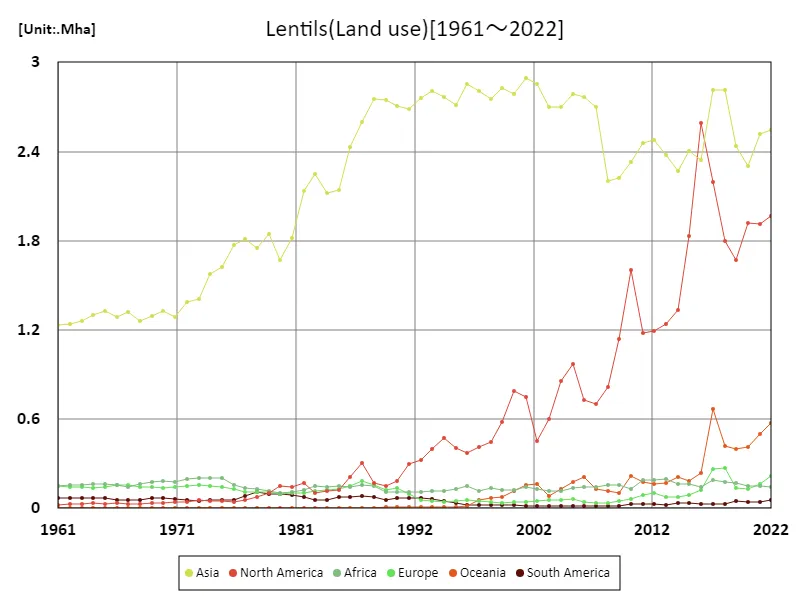

The maximum is 2.9Mha[2001] of Asia, and the current value is about 87.8%
Tomato land use (latest year, continental)
In 2022, Asia led global tomato cultivation, covering 2.69 million hectares (mha), representing a significant share of the total 4.92 mha. The average area per country is 820 thousand hectares (kha), highlighting the concentration of tomato farming in a few key nations. China’s dominance plays a major role in Asia’s large share. Over the years, global tomato cultivation has expanded due to increased demand for both fresh and processed products. While Asia remains the primary producer, other regions such as North America and Latin America also contribute to the growing global supply.
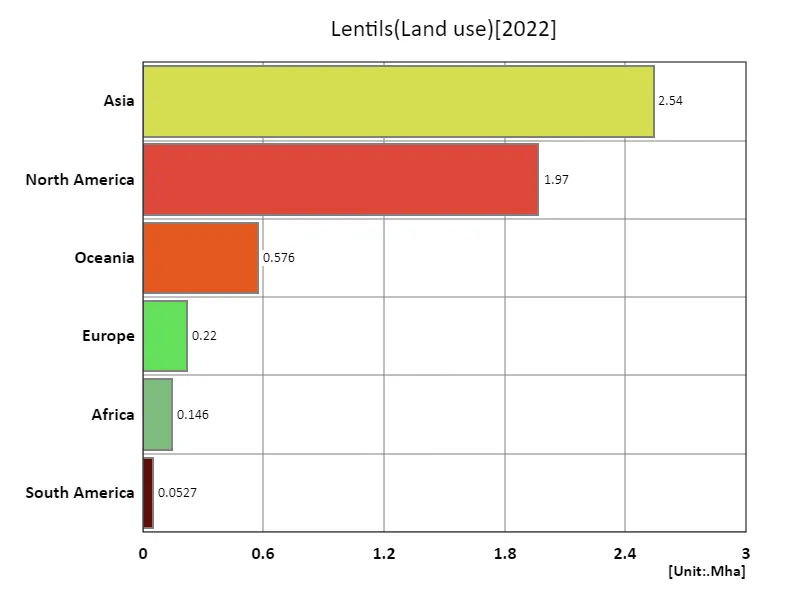

The maximum is 2.54Mha of Asia, the average is 917kha, and the total is 5.5Mha
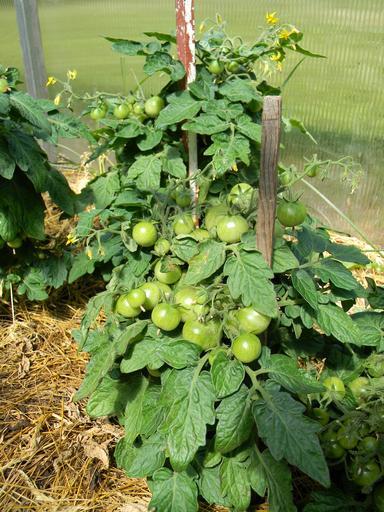


Comments